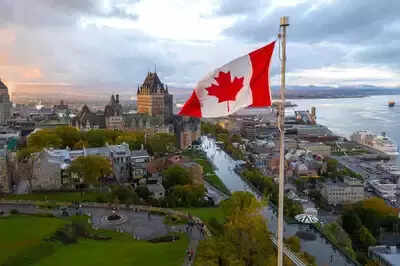International students in Canada will now face stricter scrutiny over which academic programs make them eligible for post-graduation work rights. On June 25, 2025, Immigration, Refugees and Citizenship Canada (IRCC) issued a revised list of educational programmes that qualify for the Post-Graduation Work Permit (PGWP), a move that redefines the country’s approach to student migration.The updated list adds 119 new programmes and removes 178 existing ones, effectively reordering the educational landscape in line with Canada’s current labour market needs. The changes, however, will not apply retroactively. Only international students applying for study permits on or after November 1, 2024, will be subject to the new list. Those who applied before June 25, 2025, remain eligible under the previous rules.For many, the PGWP serves as a vital bridge to permanent residency. Its reform signals a growing trend: Canada is fine-tuning its international education strategy to serve not only academic goals, but economic ones.
Shifting priorities: What made the cut
The restructured list now comprises 920 programmes, but the additions and deletions clearly reflect a pivot toward sectors with proven workforce shortages. Programmes related to healthcare, education, architecture, and skilled trades dominate the newly eligible fields.Among the key additions:
- Veterinary medicine, dentistry, and allied dental sciences
- Teacher education in biology, chemistry, French language, drama, and computer science
- Architecture and landscape design, including advanced architectural studies
- Skilled trades, such as cabinetmaking, millwork, and CNC machinist training
- Construction project and site management
These changes are anything but arbitrary. According to IRCC, all new inclusions map onto jobs identified as in-demand by federal labour market forecasts. In a statement quoted by CIC News, the department noted that programs were removed from the list because “the occupations they are linked to are no longer experiencing labour shortages.”
What’s out: Green skills and transport professions
Several academic disciplines previously eligible for PGWP have been cut, raising questions about how Canada is reprioritising within its sustainability and infrastructure narratives.Notable removals include:
- Environmental studies and marine resources management
- Trades tied to renewable energy, such as solar panel installation
- Drywall installation and construction-related trades
- The entire category of transport-related programs
Agriculture has also seen a sharp rollback, with just one programme retained under the agri-food category. The exclusions appear to reflect either a current oversupply of graduates in these sectors or a temporary de-emphasis on green economy transitions in labour strategy.
The language standard and flight school exemption
Despite the reshuffling of eligible programs, baseline requirements for obtaining the PGWP remain unchanged:
- Non-university credential holders must meet Canadian Language Benchmark (CLB) or NCLC Level 5
- University-level graduates are expected to meet CLB/NCLC Level 7
- Graduates from flight schools, however, retain their exemption from field-specific eligibility, an exception that continues to distinguish aviation training from other non-degree programs.
A coordinated policy strategy: Echoes of express entry
The timing and structure of this reform mirror recent revisions to the Express Entry system, Canada’s flagship immigration pathway for skilled workers. Earlier this year, Express Entry introduced category-based invitations, targeting applicants from sectors such as health care, STEM, and the skilled trades, precisely those favoured in the new PGWP list.Together, these developments suggest a coordinated policy blueprint that treats international students as more than temporary residents. They are being positioned as strategic entrants into Canada’s long-term workforce, with programme selection now directly influencing their post-study options.
Institutional and global impact
For postsecondary institutions, particularly those offering non-degree or niche programs, the pressure is now twofold: To ensure academic rigour and to demonstrate employability outcomes. Programmes excluded from PGWP eligibility may face declining international enrollment, as prospective students gravitate toward fields that offer a clearer immigration pathway.On the global front, Canada’s reforms may reverberate across student-sending countries. For many, the ability to work after graduation is a decisive factor in choosing Canada over competitors such as the UK, Australia, or the US. This policy could alter that equation, encouraging a more selective, career-conscious cohort of applicants.
A tactical redesign of the education-to-immigration pipeline
What this overhaul represents is not a retreat from international education, but a recalibration of its purpose. Canada is no longer content to be a passive host; it is actively sculpting its future workforce through tightly regulated immigration mechanisms. For international students, the message is clear: Choose a program with economic relevance, or risk being sidelined from post-study opportunities.The PGWP has long been a symbol of Canada’s openness. With this shift, it becomes a gatekeeper, one that will reward alignment with national priorities over academic ambition alone.


